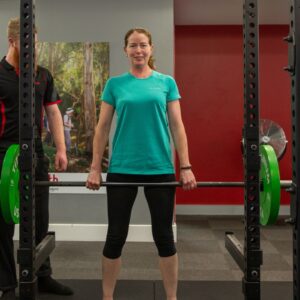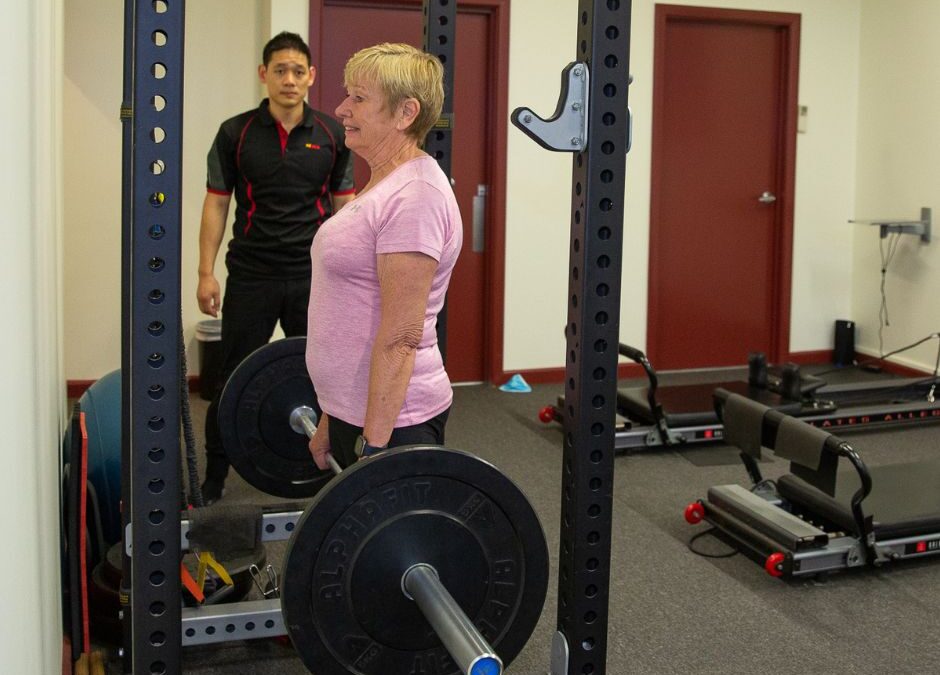The Importance of Adding Strength Training, Not Just Core Stability
A balanced fitness regimen consists of aerobic activity, flexibility training, and strength training. While aerobic and flexibility work deliver valuable health and performance benefits, strength training is a key component that should not be overlooked. Research continues to demonstrate that resistance training targeting all the major muscle groups brings additional functional and wellness advantages beyond those gained from core training alone.
Any muscle strengthening regimen begins by developing central core stability in regions like the abdomen, lower back, hips and shoulders. However, exclusively training the core falls short for optimising overall fitness. Properly load-bearing the full skeletal system through integrated moves like squats, lunges and presses leads to widespread musculoskeletal strengthening effects. This full-body approach elicits more metabolic activity and greater increases in valuable lean muscle mass than core work in isolation (Schoenfeld, 2021). Stimulating all the major muscle groups through multi-joint, functional exercises challenges the body more effectively.
Having more muscle mass boosts resting metabolic rate, meaning you burn calories more efficiently (weight management). Strength training helps counteract age-related declines in muscle that slow metabolism over time. Additionally, gaining lean mass enhances glucose regulation and positively influences chronic disease risks like diabetes (Pedersen & Febbraio, 2012). Resistance training also places controlled stress on bones, leading to increased density that protects against osteoporosis longer-term. Overall, whole body strength training provides complete musculoskeletal system support both for performance in physical activities and responding to everyday stresses.
Our mobility and independence depend greatly on having adequate muscle mass and strength to dynamically stabilise joints. Weak, deconditioned muscles paired with poor movement patterns lead to impaired biomechanics. This combination significantly increases risks for acute and overuse strains, sprains or more serious orthopaedic injury (Liu & Latham, 2009). However, when all the major muscle groups are strengthened in balanced proportions, there is greater tissue capacity to distribute kinetic forces and loads. This helps prevent localised overstress that causes common injuries like meniscus tears or shoulder impingement. It also stabilises vulnerable joints through fuller ranges of motion for preventing general wear-and-tear.
Maintaining adequate strength levels throughout the body also protects against losses of functionality and independence as we age. Sarcopenia describes age related steady decline in muscle mass many experiences, with accompanying decrease in strength and metabolic rate. Between 20-40% reductions by age 65 dramatically impact one’s ability to perform daily tasks, and continue deteriorating in later years (Mitchell et al., 2012). Whole body resistance training helps counteract sarcopenia for staying resilient and capable longer.
The advantages of comprehensive strength training span far beyond orthopaedic health and injury prevention. Current research continues highlighting the positive neuroendocrine influence resistance exercise exerts, enhancing mental health and resilience to stress (Pederson, 2017). The release of neurotransmitters and endorphins with high intensity training have antidepressant effects, elevating mood while lowering perceived anxiety and depression levels.
There is also a growing link between higher volume strength training and reduced cardiometabolic disease incidence. Hypertension, high cholesterol and triglycerides, stroke, heart attack and diabetes risks all appear lowered by incorporating just 1-2 full body lifting days weekly alongside regular cardio activity (Liu et al., 2019). As muscle performs glucose uptake and supports lipid metabolism, maintaining higher lean mass directly influences disease markers like HbA1C(blood glucose) and blood lipids. It also stimulates positive structural and functional changes in the cardiovascular system (Haykowsky et al. 2011). Everything from psychology to endocrinology and cardiology is affected by strength stimulus.
In conclusion, while core training alone has many benefits, exclusively limiting exercise to abdominal training is only one part of a multi system. An effective exercise program consists of developing central core stability paired with stimulating all the major muscles through multifunctional strength movements. The combination elicits widespread positive influence on musculoskeletal health, body composition, injury prevention, metabolism and numerous disease risk reductions. Just 2-3 full body resistance sessions weekly meaningfully boost physical performance and whole-body wellness.
References:
Schoenfeld, B. J., Grgic, J., Van Every, D. W., & Plotkin, D. L. (2021). Loading Recommendations for Muscle Strength, Hypertrophy, and Local Endurance: A Re-Examination of the Repetition Continuum. Sports, 9(2), 32. https://doi.org/10.3390/sports9020032
Pedersen, B. K., & Febbraio, M. A. (2012). Muscles, exercise and obesity: skeletal muscle as a secretory organ. Nature Reviews. Endocrinology, 8(8), 457–465. https://doi.org/10.1038/nrendo.2012.49
Liu, C., & Latham, N. K. (2009). Progressive resistance strength training for improving physical function in older adults. Cochrane Database of Systematic Reviews, 3(3). https://doi.org/10.1002/14651858.cd002759.pub2
Mitchell, W. K., Williams, J., Atherton, P., Larvin, M., Lund, J., & Narici, M. (2012). Sarcopenia, Dynapenia, and the Impact of Advancing Age on Human Skeletal Muscle Size and Strength; a Quantitative Review. Frontiers in Physiology, 3. https://doi.org/10.3389/fphys.2012.00260
Pedersen, B. K. (2017). Anti-inflammatory effects of exercise: role in diabetes and cardiovascular disease. European Journal of Clinical Investigation, 47(8), 600–611. https://doi.org/10.1111/eci.12781
LIU, Y., LEE, D.-C., LI, Y., ZHU, W., ZHANG, R., SUI, X., LAVIE, C. J., & BLAIR, S. N. (2019). Associations of Resistance Exercise with Cardiovascular Disease Morbidity and Mortality. Medicine & Science in Sports & Exercise, 51(3), 499–508. https://doi.org/10.1249/mss.0000000000001822
Haykowsky, M. J., Timmons, M. P., Kruger, C., McNeely, M., Taylor, D. A., & Clark, A. M. (2013). Meta-Analysis of Aerobic Interval Training on Exercise Capacity and Systolic Function in Patients With Heart Failure and Reduced Ejection Fractions. The American Journal of Cardiology, 111(10), 1466–1469. https://doi.org/10.1016/j.amjcard.2013.01.303
Do you have any questions?
- Call us on (03) 9857 0644 or (07) 3505 1494 (Paddington)
- Email us at admin@mdhealth.com.au
- Check out our other blog posts here
Our clinical staff would be happy to have chat if you have any questions.
Take the first step to a healthier you!
Would you prefer for someone to contact you regarding booking your Initial Physiotherapy appointment, Initial Exercise Physiology, Initial Osteopathy session or FREE Full Body Assessment*?
Or do you have any other enquiry about our services at MD Health?
Please fill in this form and someone from MD Health will be in touch with you soon.
Alternatively please call us on 03 9857 0644 (Kew East), 03 9842 6696 (Templestowe), 03 8683 9442 (Carlton North) or 07 3505 1494 (Paddington) to book now!
*Please note only the Full Body Assessment is a FREE service. The Full Body Assessment is for new clients at MD Health or returning clients who haven’t been in for 6 months or longer who intend to particpiate in our 13 Week Clinical Pilates Program**.
For all new clients who wish to come in for a one-off, casual or adhoc basis for Physiotherapy or Exercise Physiology the Initial Physiotherapy or Initial Exercise Physiology appointment is a paid service.
** The 13 Week Clinical Pilates Program at MD Health is not a lock in contract and you are not required to attend for the full 13 weeks if you do not wish.
This site is protected by reCAPTCHA and the Google Privacy Policy and Terms of Service apply.




